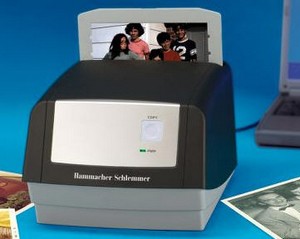Your kid wants to send her cousin an email. She doesn't have an email address. You do, but you don't want her messing with your account. You're also painfully aware of the spam flooding your inbox - much of it in appropriate for children - and the prospect of exposing your kid to such junk curdles your blood. What to do?
Setting up a safe email address for your child isn't as difficult as you may think. You essentially have two options: using a proprietary "made for kids" email system with built-in parental controls, or signing up for a web-based email account and customizing it to minimize spam and give you some oversight.
There are several email systems geared toward creating both a safe, easy-to-use environment for kids and a "window" through which parents can monitor children's conduct. For a small monthly fee, services such as ZooBuh, Kid Safe Mail, and Kidmail.net (among others) offer whitelisting (you create a list of approved people with whom your child can exchange email), spam blocking, email monitoring (the service sends copies of incoming and outgoing messages to you), profanity filters and activity logs. These are ideal for young children who are making their first foray online - the interface is friendly and the limitations aren't overly binding. After all, they only email a small number of people (most of whom are probably family).
For older kids who are more independent and have more people they want to email, setting up for a web-based email account is the most sustainable option. Google's web-based email service, Gmail, has an excellent general spam filter built in. While not 100% spam-immune, it does a pretty good job of trashing the worst offenders. One nice feature: by default, Gmail doesn't display pictures embedded in email messages, so if an unsavory image manages to sneak past the spam filter, at least it won't pop up automatically.
In Gmail, you can easily turn on a setting that forwards copies of all incoming email to your email address so you can keep tabs on what's going on. (Of course, your children will figure out how to turn this setting off, so it's worth talking with them about this setup up front so they understand why you are monitoring their communication.)
Another option is to set up a personalized email address for your child inside your own Gmail account. It's easy -- John Watson outlines how on his blog, Flagrant Disregard.
Many email software programs (such as Macintosh Mail, Mozilla Thunderbird, and Microsoft Outlook) allow you to set up your own whitelists, so that any incoming email that doesn't match a list of email addresses you specify gets thrown away.
Ultimately (and sooner than you might think), your kids will learn to navigate the Internet on their own. There is nothing to stop them from changing settings or from setting up their own email accounts and checking then on someone else's computer. So whatever email choice you make at the outset, teach your kids some basic rules to help them keep their email address out of spam lists for as long as possible:
- Choose an email address that's anonymous so it can't be connected to your name.
- Only give your email address to trusted friends; do not post it in a public place where it can be harvested by roving "spam-bots" and added to any number of shady mailing lists.
Finally, be sure to educate your kids about what happens online. Share your online experience with them. Lay the groundwork so they can make good decisions as they grow more independent. Teach them about what spam looks like and about safe correspondence, and talk to them about who they are emailing. Reassure them that you respect their privacy but are concerned with their safety. Check in on them - and email them yourself! (Bonus: you just opened a new line of communication.)
News Detail
 Wednesday, July 16, 2008 at 09:34AM
Wednesday, July 16, 2008 at 09:34AM 
 Miguel M. de la O | Comments Off |
Miguel M. de la O | Comments Off |  Photography,
Photography,  USB
USB 
